Probiotics are an important part of a healthy diet
It’s important to add probiotics to your diet since there are incredible health benefits that go beyond digestion. Eating probiotics helps restore or enhance the health of our gut microbiome, according to Alyssa Pike, RD, the manager of Nutrition Communications for the International Food Information Council (IFIC). “Many of the microorganisms that naturally live in our bodies are like those found in probiotic foods, drinks, and dietary supplements,” Pike says. “The foods we eat can impact our gut microbiome, which is why it’s important to consume both pre and probiotic foods.” Here are some of the best options to add to your diet, besides yogurt.
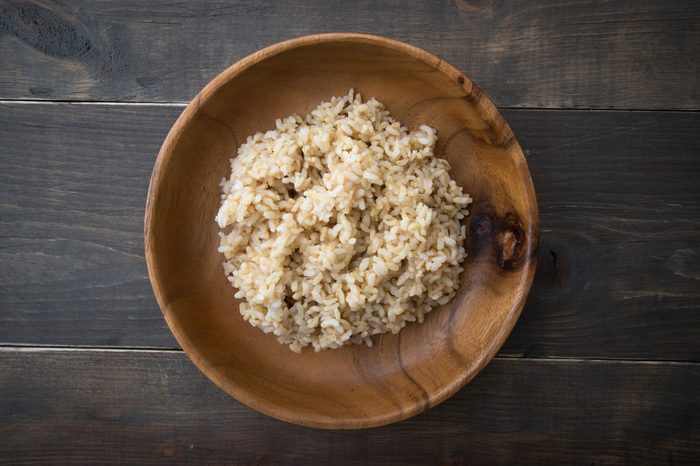
Reheated potatoes, pasta, or rice
Cooked potatoes, rice, or pasta that have been cooled—and then reheated, or eaten cold—are a great sources of resistant starch, according to Johns Hopkins Medicine. Resistant starch is a prebiotic, a type of indigestible carbohydrate that acts like food for gut bacteria, encouraging the good bugs to grow and flourish. While resistant starch has many health benefits, one of its most promising aspects is its ability to increase insulin sensitivity, helping people reduce type 2 diabetes risk, per Johns Hopkins Medicine. Concerned about your blood sugar? Try these 7 ways to maintain healthy blood sugar levels.
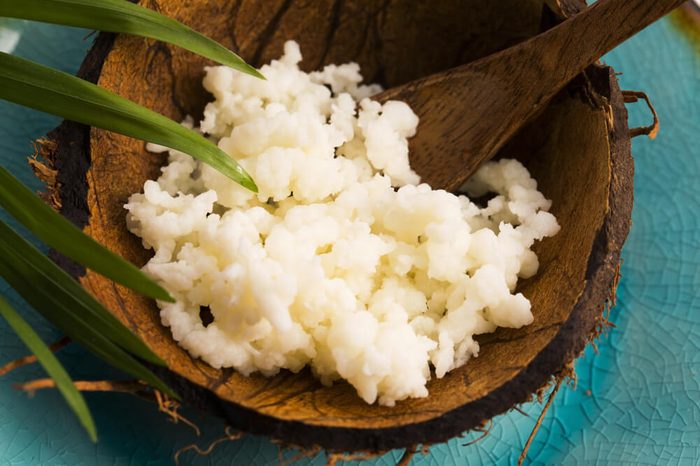
Kefir
Think of kefir as yogurt’s tangier but more powerful cousin. The drink is made by seeding milk with kefir “grains,” which are tiny bundles of yeast and bacteria, and letting it sit. Over time, the grains ferment the milk, producing a tart drink full of healthy probiotic bacteria for your gut. Studies suggest that kefir can help relieve gastrointestinal problems and allergies and may even have a positive effect on heart health. (Females should opt for these best probiotics for women.)
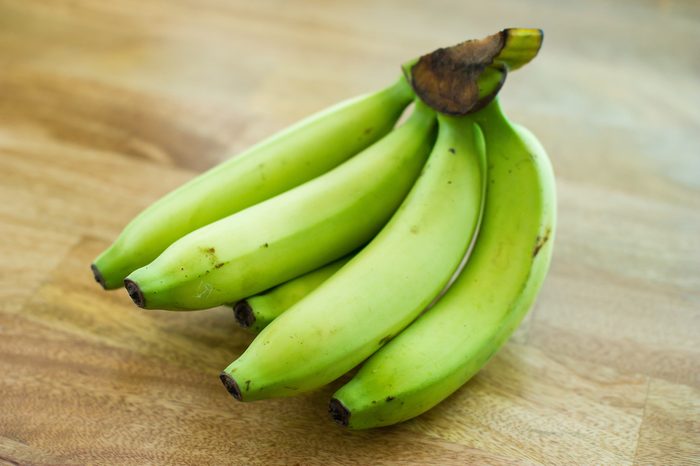
Green bananas
Most people go out of their way to avoid green bananas, but there’s good news for people who just can’t wait until they’re fully ripe. Slightly green bananas are a rich source of prebiotics, particularly resistant starch, Pike says. Green bananas also have a healthy dose of both soluble and insoluble fiber, vitamins, and minerals. The combo provides a feast for good gut bacteria and helps protect your heart and bones. If you don’t like the taste, try them boiled or fried or sub some green banana flour into your baking in place of regular flour. Another benefit of not-quite-ripe bananas? They’re one of the 12 most filling fruits and veggies.
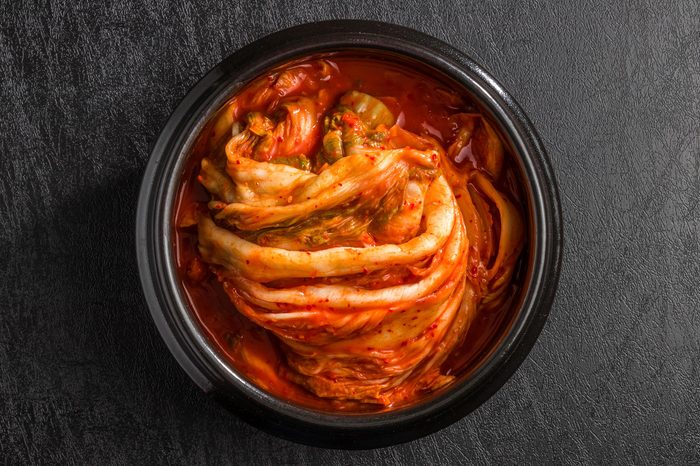
Kimchi
Kimchi is made by fermenting vegetables with probiotic lactic acid bacteria, which gives it the same boost of healthy bacteria as other fermented probiotic foods such as yogurt. Plus, since it’s made from cruciferous veggies like bok choy and cabbage along with healthy spices like garlic and peppers, it provides a mega-dose of vitamins, fiber, and antioxidants. One 2014 study found that kimchi helps protect against cancer, obesity, and constipation while lowering cholesterol, boosting brain and immune function, and even providing some anti-aging benefits.
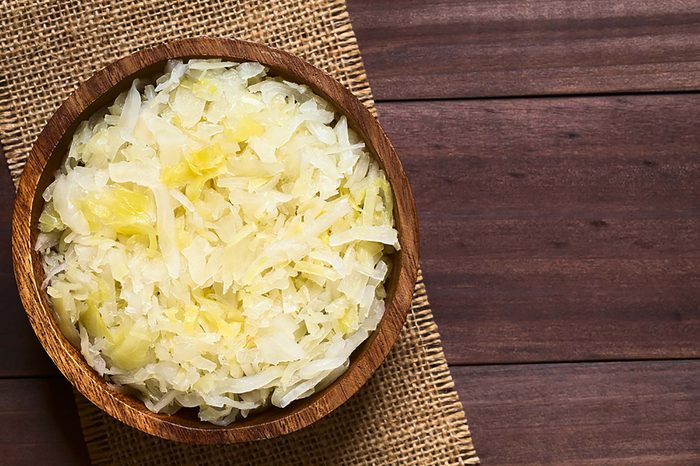
Sauerkraut
Sauerkraut is kimchi’s German cousin, a lacto-fermented side dish filled with cabbage, carrots, and spices—not to mention plenty of healthy bacteria for your gut. And not only does it have similar benefits as other fermented veggies, but a study done by the College of William & Mary found that eating a daily serving of sauerkraut helped significantly reduce social anxiety. The researchers believe it’s because more than 80 percent of the calming hormone serotonin is manufactured in our guts (not our brains!) and the good bacteria boosted serotonin production.
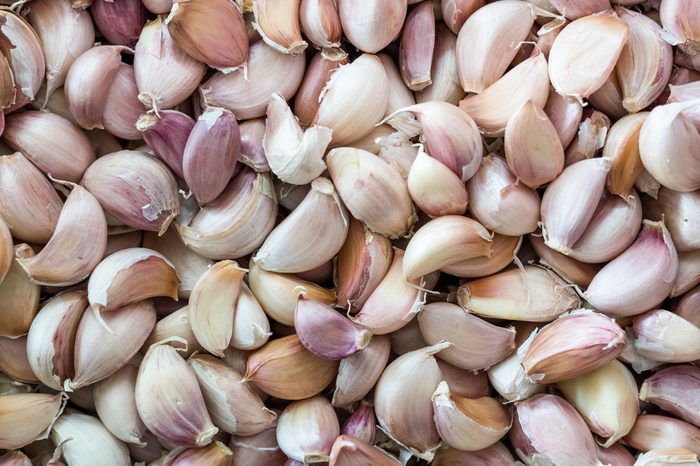
Garlic
Everyone’s favorite way to get bad breath also has powerful gut bacteria-boosting properties. Garlic is not only Americans’ number-one favorite spice (after salt) but is also beloved by bacteria thanks to its rich supply of prebiotics, their preferred food. It promotes the growth of beneficial Bifidobacteria in the gut, according to Pike. Raw garlic is the best source, but for those who don’t like the burn (or who feel like kissing someone later), cooked garlic also works well—so well in fact that a study published in Food Science and Human Wellness found that eating garlic is an effective way to prevent many gastrointestinal illnesses. Are you still confused about prebiotics and probiotics? Learn a little more about the difference between probiotics and prebiotics.
